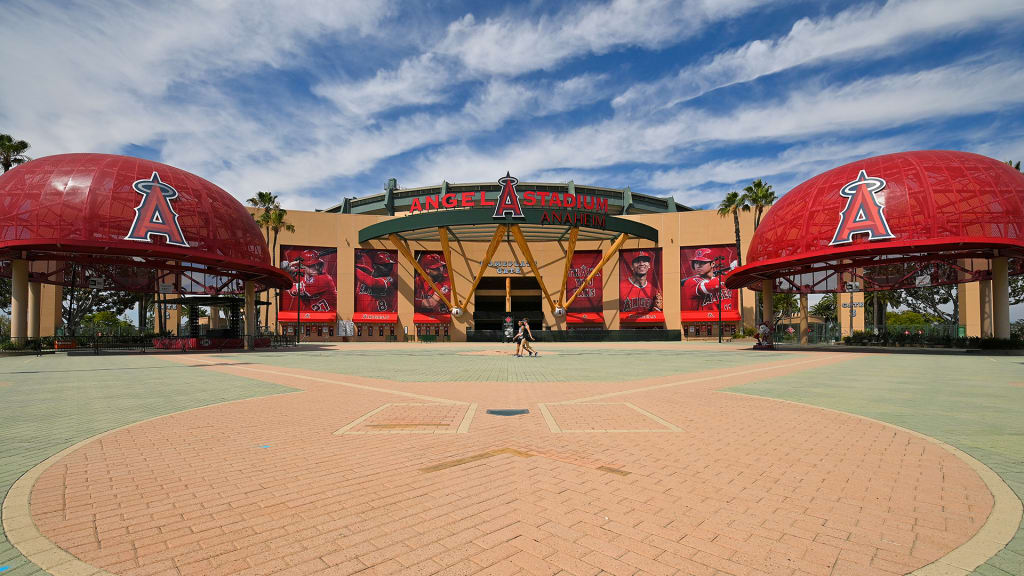
ANAHEIM -- When it comes to older stadiums, most fans think of Chicago’s Wrigley Field, Boston’s Fenway Park or even Los Angeles’ Dodger Stadium.
But Angel Stadium is the fourth-oldest ballpark in the Majors, as it debuted in 1966 after the club moved from Los Angeles and became the then-California Angels. Angel Stadium, however, doesn’t look much like it did when it first opened, unlike Wrigley, Fenway or Dodger Stadium, which have mostly kept their character over the years.
The reason why is because of the major renovations to Angel Stadium in 1997, when the club was under Disney ownership. There had been previous changes -- especially when the NFL’s Los Angeles Rams were co-tenants from 1980-1994 -- as the Big A sign beyond the left-field fence was moved in '79 to make room for more seating that essentially enclosed the stadium.
But the changes that helped Angel Stadium look the way it does today mostly came during the overhaul that lasted from 1997-98. They were changes that were overdue according to many fans, who felt like additional seating in the outfield had obstructed their views of the mountains and hills beyond it.
The first order of business was to demolish the sections beyond the outfield walls, and there was even some talk about moving the Big A back to its original location. But the Big A remained in its current location, nearer to the 57 Freeway for signage purposes.
The renovations continued during the 1997 season with the Angels playing at home despite the construction at the ballpark.
Other additions included adding outfield bleachers that allowed for fans from other sections to resume their views of the local mountains and hills beyond the ballpark. The club wanted to create a more open feel for fans after feeling closed in after the changes to accommodate the NFL. The Angels also updated their video board and added an out-of-town scoreboard in right field.
The other major change that affected the aesthetic of the ballpark was making all the seats green to replace the original multi-colored ones. The ramps in the ballpark were also painted green and the exterior was also completely renovated as well. Eleven vertical feet were added to the right-field wall as well, which allowed for the out-of-town scoreboard to fit. The stadium also added 5,075 club seats and 78 luxury suites as well.
The outside of the stadium was also changed, with a plaza built around the entire park, including a new home-plate entrance that added an oversized Angels hat on each side of the entrance. It also included an infield made up of bricks that included the names of each player who played on Opening Day for the organization. The club also added two statues, one for longtime owner Gene Autry and one for Michelle Carew, Hall of Famer Rod Carew's daughter who passed away from leukemia in 1996.
But as Angels fans know, perhaps the biggest change was the addition of the very Disney-esque rock fountain in left field. It was a signature touch to the ballpark and resembled something that would fit in at nearby Disneyland.
Disney named the left-field addition the "California Spectacular," and it features an "A" as part of the artificial rock formation with geysers erupting to create a waterfall effect. It's become one of the Angels' gameday traditions, as fireworks are shot out of that area at the start of every game, after every Halos home run and after Angels wins.
The renovation was complete in time for the 1998 season and created the look that defines the ballpark today. There have been upgrades over the years -- including lighting improvements in 2009 and upgraded outfield video boards as well as adding a new video ribbon heading into the '18 season.
The Angels also reached an agreement with the City of Anaheim in 2019 to remain at the current site until at least '50. But the big question is whether owner Arte Moreno will elect to do a major renovation similar to the one 24 years ago, or if he’ll decide to build a new ballpark in a different area of the parking lot. Either way, Angel Stadium wouldn’t be what it is now if it weren’t for Disney investing money to upgrade it and make it more modern despite being one of the oldest parks in baseball.
Senior Reporter Rhett Bollinger covers the Angels for MLB.com. He previously covered the Twins from 2011-18.
